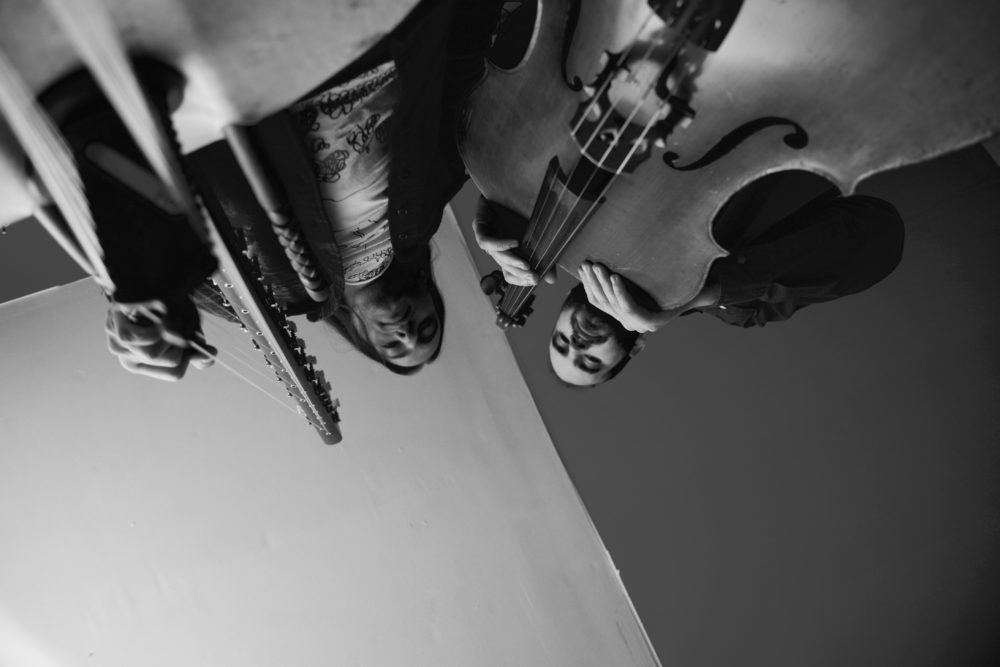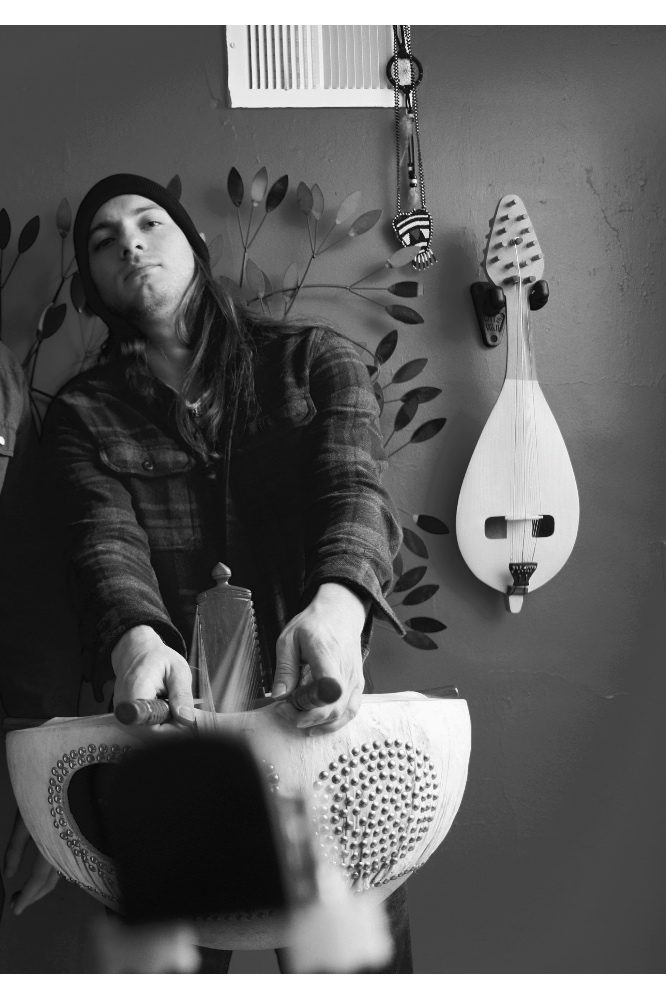
Welcome to our weekly show recommendation column RSVP HERE. Due to live show cancellations we will be covering virtual live music events and festivals.

If you’re thinking of learning a new exotic instrument and/or how to become an electronic music producer while in lockdown, look no further than Lubo Smilenov for inspiration. For his musical project Amalgamy he plays every beautiful instrument you’ve never heard of including Kora, Kaval, and Gadulka. He is a one-man band and electronic music producer who can play guitar, bass, keys, program drums and is an Ableton Push master. In 2018, Lubo teamed up with cellist Bryan Wilson on Amalgamy’s debut album Cynefin. The album is full of film score-esque textures, homages to various world musical traditions and electronic soundscape experiments. It’s the music you would imagine playing before an ancient battle.
The next chance you can see Lubo shredding his Ableton Push and playing anything from the Kora to Bulgarian bagpipes is Saturday, May 2nd at 8pm. We chatted with Lubo about how he approaches his sound, his practice routine and the $5 key to his live stream set up.
AF: The music you’re performing live these days is a departure from your first album with Amalgamy. How would you describe it and how are you are approaching it?
LS: My approach to music has been so impromptu lately. It can go in any direction at any moment. One second I’m pursuing music fit for film scores. The next I’m putting break core beats over auctioneer samples and archaic goatskin bagpipes. I’ve recently embraced an anything goes approach more than ever.
A lot of the electronic music I’ve been making lately has been done through my Ableton Push launchpad. I really enjoy having a hands on approach to electronic music. Everything is I do is triggered by my fingers the same way it would be with a piano or guitar. It feels just like a sound palette. I just dip a brush into one of every sixty-four buttons and trigger an intended statement of sound. However, the culmination of all these statements creates something that was previously unintended. Sometimes it’s the idea within an idea that we’re looking for.
AF: What is your set up for live streaming?
LS: I plug a dual 1/4” TS to 1/8”TRS cable into my interface’s main output. The 1/8” side goes into a Radioshack Stereo Jack Adapter, and that piece goes into my cell phone. That adapter is the $5 key to this setup. Thereafter, I mix the audio by recording videos on my phone while playing and listen back to how it sound after I’m done. I make adjustments and repeat the process.
AF: You have a large collection of world instruments. Where did you get them?
LS: I’ve been very fortunate to have earned the trust of a few prominent luthiers whom I admire very much. Most of my instruments come from the the village of Kameno, Bulgaria. We’re talking about bagpipes (Gaida), flutes (Kaval), and bowed lyres (Gadulka). My Kora is from The Gambia via Sona Jobarteh’s website. No matter how rare the instrument I’m looking for, I always find it with the help of other musicians. Musicians in NYC generally have each other’s back with these things. It’s amazing.
AF: What is your favorite instrument? Which do you practice the most?
LS: I can’t seem to stick to one thing and it’s so liberating. What I usually do is spend 15-20 minutes a day picking up different instruments around the house at random. If I do end up practicing something disciplinary like scales, I always reward myself with improv at the end. I’ll play at least one bowed instrument, one regular string instrument, and one wind, before moving onto music production.
AF: Where do you think music and technology are going in the next decade? Do you think an extended quarantine will have an effect on the future direction of live music, or music in general?
LS: There are talks of a budding music renaissance based on the current influx of purchases made on music retail sites. Most of these purchases have to do with electronic music via keyboards, synths, beatmakers, etc. It’s still too early to say anything in confidence given the morbid reality we are facing. However, I do think that the role of the bedroom producer will become more prominent in the coming year(s). It really is becoming more important for people to express themselves through creativity. Remote recording and file sharing will certainly increase without a doubt. Cloud servers that host plugins and resources are going to be utilized more than ever.
Extended quarantine will certainly have an effect on the future direction of live music. Music is made differently when musicians prepare for a live show together vs. when they are alone at home. Music made at home has less restrictions. There’s no one to push back at your crazy idea. Suddenly, you have to fill the role of the drummer, singer, bassist, producer, songwriter, video editor, and marketer all at once. Live streaming has never been more valuable as a tool for musicians. As far as performance goes, it’s all we have now.
RSVP HERE for Amalgamy’s set on Instagram Live Saturday 5/2 at 8pm.
More great live streams this week…
5/1-5/3 Love from Philly: Kurt Vile, G. Love, John Oates, Man Man + More via YouTube. 12pm est, all donations benefit Philadelphia’s Entertainment Community. RSVP HERE
5/1 Foxygen via Pickathorn Twitch. 4pm est, RSVP HERE
5/2 Live From Here: Chris Thile, Watkins Family Hour, Sylvan Esso via WNYC. 6pm est, RSVP HERE
5/2 Remote Utopias: Tame Impala, Weyes Blood and more via NTS App. 5am est, raising money for Gloval Foodbank Network RSVP HERE
5/2 Nap Eyes via Baby’s TV. 8pm est $5, RSVP HERE
5/3 Bang On A Can 6-hour livestream. 3pm est RSVP HERE
5/6 Breathwork with Kimi Class via Instagram. 7pm pst, RSVP HERE
5/7 Alkaline Trio via Riot Fest Facebook. 7pm est, RSVP HERE
5/7 Tori Amos via Murmrr Theatre YouTube 2pm est, RSVP HERE


